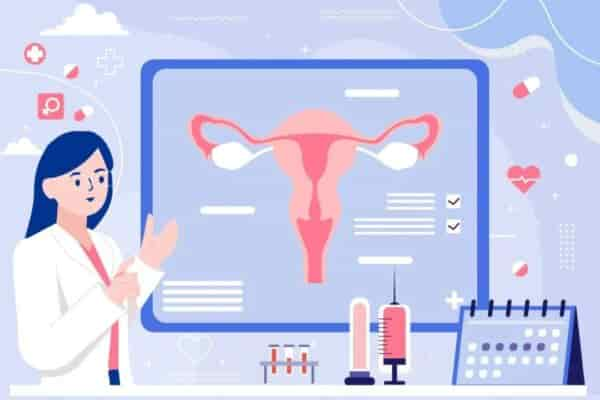Does Ovulation Promotion Empty the Ovaries? Debunking IVF’s Biggest Academic Rumor

The biological truth about egg reserve
A woman is born with an ovarian reserve of about 2 million primordial follicles, which drops to 300,000-500,000 by puberty, and is depleted by 1,000 follicles per month during natural reproduction. Ovulation induction techniques only awaken the same follicles that are destined to atresia in the natural cycle – which explains why the incidence of premature ovarian failure remains stable at 1-2% (no different than in the natural population) after 6 million IVF babies have been born worldwide.
Precision medicine logic of ovulation promotion
- Targeted follicle selection mechanism
Recruitment target: only acts on sinus follicles with a diameter of 2-5mm (0.1% of the follicular pool)
Drug action pathway:
FSH drug mimics physiological peak (10-15IU/L → therapeutic dose 150-300IU)
Avoid stimulation of primordial follicles (<0.05mm diameter, no FSH receptors)
- Follicular developmental kinetic data
Natural cycle: 15-20 sinus follicles initiated → 1 dominant follicle matured
Ovulation cycle: synchronized follicular development in the same batch → average number of eggs acquired 8-15 eggs
Comparison of follicle depletion: the follicle depletion in Ovulation Cycle is exactly the same as that in Natural Cycle.
Four authoritative studies to dispel rumors
JAMA 10-year cohort study (n=123k):
Age at menopause in women who received ≥3 boosts (51.2 years) vs natural population (51.5 years)
AMH levels return to baseline 6 months after ovulation
Human Reproduction metabolic tracking:
Isotope labeling shows that ovulation drugs do not alter primordial follicle resting state
Primordial follicle activation rate maintained at 0.03%/day (natural physiologic level)
China Reproductive Medicine Alliance data:
5-year follow-up of 18,000 ovulation-promoting patients: 0.89% incidence of premature ovarian failure
Sinus follicle count (AFC) rebounded 98.7% at 3 months post cycle
Follicular fluid proteomic analysis:
Expression of apoptotic factors (BAX, Caspase-3) was decreased in follicles of pro-ovulatory cycles
Levels of anti-apoptotic proteins (BCL-2) increased by 30%.
Clinical Practice Options for Ovarian Protection
Individualized Ovulation Promotion Strategies
AMH-directed dosing:
AMH > 3.5ng/ml: antagonist regimen (anti-OHSS)
AMH <1.1ng/ml: microstimulation regimen (daily dose ≤150IU)
Real-time follicular development monitoring:
Ultrasound measurement of follicle diameter every 48 hours (accurate to 0.1mm)
Serum E2 level dynamic adjustment of drugs (target 200-300pg/ml/follicle)
Ovarian function repair technology
Mitochondrial activation therapy: Coenzyme Q10 600mg/day + DHEA 75mg/day
Ovarian cortical resuscitation: platelet rich plasma (PRP) local injection
Blood flow optimization protocol: low molecular heparin to improve ovarian perfusion (PI <1.5)
Technological breakthroughs in fertility preservation.

- Oocyte vitrification freezing
Thawing survival rate >95
Cumulative live birth rate not different from fresh eggs
- Ovarian tissue cryotransplantation
83% ovulation recovery rate after autologous transplantation
More than 200 healthy babies have been born
- Artificial Ovarian Bioscaffold
3D printing technology to reconstruct follicular microenvironment
Will enter clinical trials in 2025
Scientific advice to patients
Treatment cycle limit: ≤3 consecutive cycles of ovulation, ≤6 cumulative times per year
Nutritional support program:
Daily supplementation of α-lipoic acid 600mg (to reduce oxidative stress)
Mediterranean dietary pattern (15% increase in the number of eggs acquired)
Precise monitoring indicators:
Pre-cycle testing of AMH, AFC, FSH/LH ratio
Mid-cycle monitoring of insulin-like growth factor (IGF-1 >200ng/ml)

Cognitively disruptive clinical cases
Case 1: 38-year-old woman completed 7 times of ovulation and gave birth to a healthy fetus at the age of 42 in a natural pregnancy
Case 2: Cancer patient’s AMH remained 1.2ng/ml 10 years after ovulation.
Remember: modern ovulation stimulation technology is a precise “follicle resource manager”, standardized treatment under the guidance of a fertility doctor can not only achieve the goal of fertility, but also retain hope for the future!






